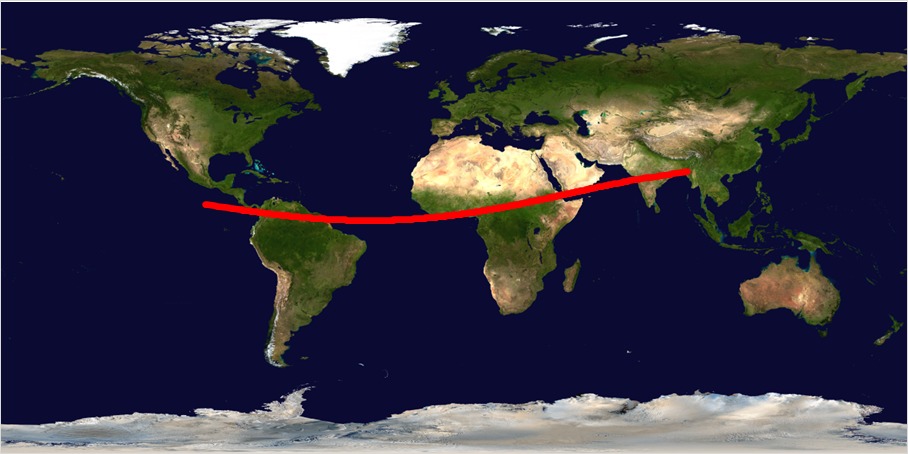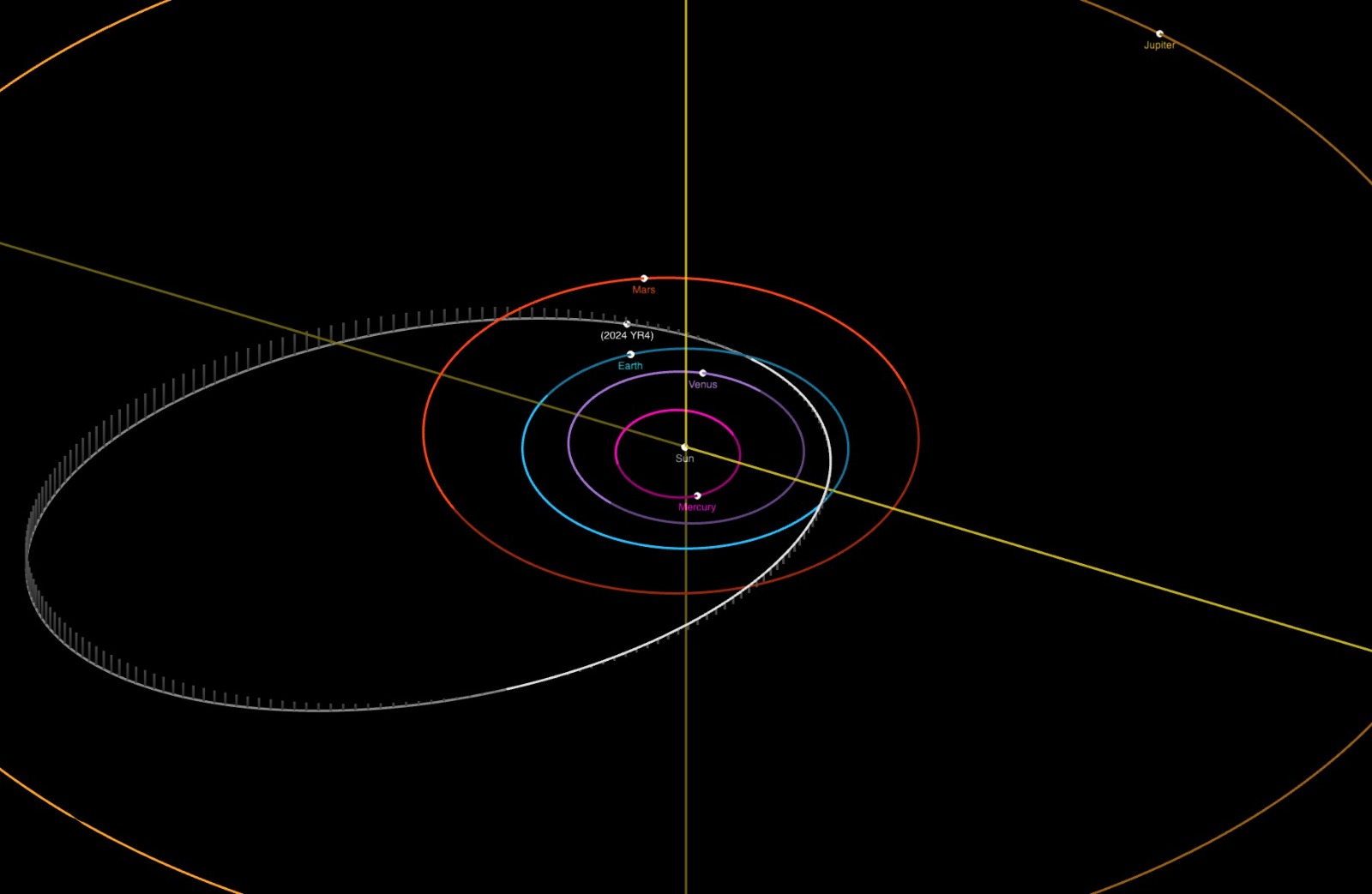Potential impact of an asteroid with Earth in December 2032
Santa María Tonantzintla, February 6, 2025. The Near-Earth Asteroid (NEA) 2024 YR4 was discovered on December 27, 2024 by the Asteroid Terrestrial Last Alert System (ATLAS) telescope at the University of Hawaii, in Rio Hurtado, Chile.

Impact risk corridor for NEA 2024 YR4.
Shortly after its discovery, asteroid warning systems determined that this object had a 1.3% chance of impacting Earth in December 2032. In particular, the International Asteroid Warning Network (IAWN), dated January 29, 2025, issued a notification of a potential impact of this asteroid with Earth, addressed to the Planetary Defense Office of the European Space Agency (ESA), the United Nations Office for Outer Space Affairs (UNOOSA) and the Space Mission Planning Advisory Group (SMPAG). For the first time in history, the UN has activated the planetary defense protocol in the event of a possible impact of asteroid 2024 YR4 on Earth.
At the time of writing, both the European Space Agency’s Near-Earth Object Coordination Center (NEOCC) and NASA’s Center for Near-Earth Object Studies (CNEOS) estimate that this asteroid has a 1.6% chance of impacting Earth in December 2032. This means that there is a 98.4% chance that the impact will not occur. Asteroid 2024 YR4 has been classified as level 3 on the Torino impact risk scale, still far from a certain collision, which is only established from level 8. It is important to note that the risk scale of a recently discovered NEA can be high, but as we have new observations, the parameters that define its orbit are calculated with greater precision and, generally, its danger decreases.

Heliocentric orbit of asteroid 2024 YR4 relative to Earth's orbit. Obtained from JPL's Horizons system.
Asteroid 2024 YR4 is estimated to be between 40 and 100 metres wide and has a probability of impact with Earth of more than 1% in the next 50 years. For this reason, two asteroid hazard response groups established under the auspices of the UN were activated: the International Asteroid Warning Network (IAWN) and the Space Mission Planning Advisory Group (SMPAG). While IAWN (chaired by NASA) is responsible for coordinating the group of international organisations involved in the search, monitoring and characterisation of asteroids, as well as developing a strategy to help world governments analyse the consequences of asteroid impacts, SMPAG (chaired by ESA) has among its objectives the exchange of information for the development of collaborative missions that can prevent future collisions between an asteroid and Earth.
An asteroid the size of 2020 YR4 is estimated to impact Earth every several thousand years and could cause severe damage on regional scales (approximately 50 km, assuming the upper size limit). IAWN has calculated, from the available data, an impact risk corridor extending across the eastern Pacific Ocean, northern South America, the Atlantic Ocean, central Africa, the Arabian Sea, and southern Asia.
Future observations are required to increase the precision of its orbit and reduce the uncertainty in the probability of this asteroid impacting Earth. 2024 YR4 will not be visible until early April 2025, when it will be too faint to be observed with ground-based telescopes. It will probably not be possible until June 2028, when this NEA returns to Earth's vicinity, to modify its impact probability. In its next approach to Earth, radar observations, thermal infrared observations or observations from spacecraft that can get close to the asteroid will be necessary to determine its size more precisely, which is of crucial importance to specify its dangerousness.
Luis Enrique Erro # 1, Tonantzintla, Puebla, México, Código Postal 72840, Tel: (222) 266.31.00, difusion@inaoep.mx
This work is licensed under a Creative Commons Attribution-NonCommercial-NoDerivs 2.5 Mexico License.


